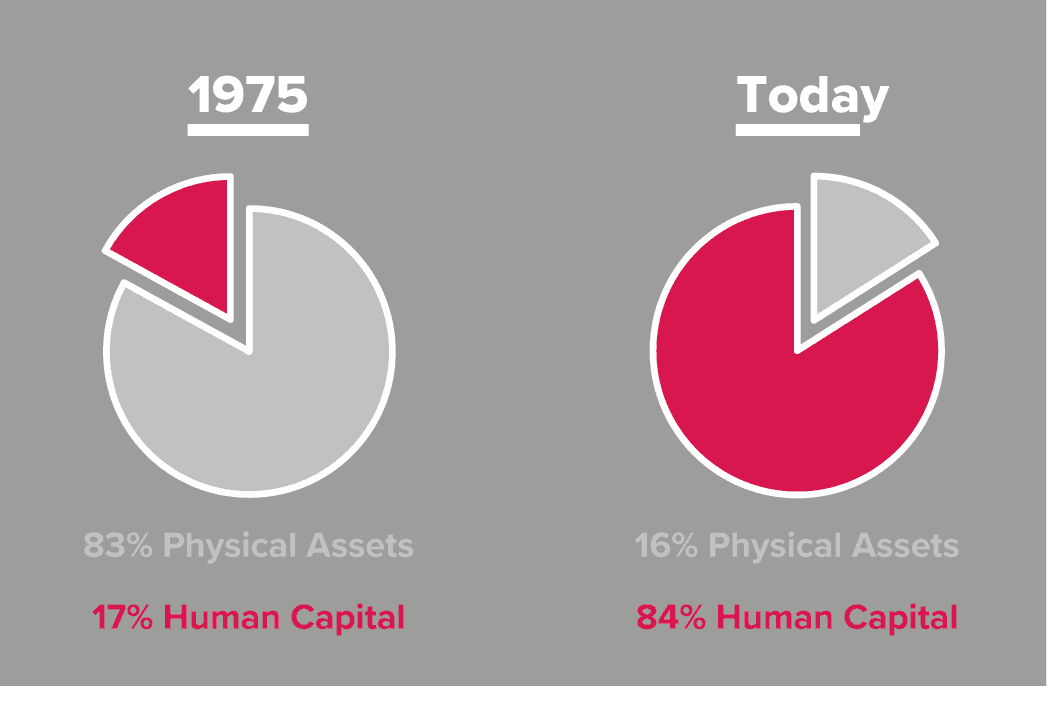Overcoming talent shortages with effective skills management
Find out why keeping tabs on skills is the secret to bridging talent gaps

Talent shortages are nothing new—but their severity is. 77% of employers find it difficult to fill job vacancies, marking the highest talent shortage in almost two decades.
To make matters worse, Korn Ferry casts a disappointing prediction for future knowledge gaps: a collective $8.5 trillion revenue loss due to a lack of skilled employees by 2030. If leaders want to prevent talent shortages from wreaking havoc on their bottom lines, it’s becoming increasingly clear that now is the time to take action.
Fortunately, there are a handful of strategies and tools that executives can harness to put a stop to skill gaps—before they snowball into bigger talent shortages.
What is a talent shortage?
Talent shortages occur when an organization’s current workforce doesn’t have the skills needed to meet a company’s goals. It can also be thought of as the disparity between the skills employers need for their organizations to thrive and the number of available employees or job seekers with those skills.
As the pace of technological innovation accelerates, employees must continue to learn new skills at a faster rate. If they don’t, there’s a risk their employer may have the headcount they need while still lacking some key capabilities that are imperative to operational continuity and revenue growth.
What causes talent shortages?
Technological advances are everywhere and they are happening in shorter cycles. These advancements—seen in everything from AI and robotics to social media and e-commerce—changing the nature of the jobs that need to be done and the skills required to do them. According to the Organization for Economic Co-Opeeration and Development, as many as 1.1 billion jobs could be transformed by technology over the next decade. These transformations require workers to develop and build new skills, and fast.
As a result of this accelerated technological advancement, the half-life of skills is also shrinking, meaning that information is becoming outdated more quickly than it ever was before—from about 5 years to just 36 months.
What industries are most impacted by talent shortages?
While organizations in all industries are likely to face talent shortages in the coming years, a few sectors are particularly susceptible to these gaps. According to McKinsey, sectors that experience high levels of disruption are likely to have the most pronounced unmet talent needs. These industries include financial services, technology, and telecommunications. The same report identifies data analytics, IT management, and executive management as the business areas in which upskilling and reskilling needs will be most prevalent.
4 steps leaders can take to combat talent shortages by managing skills
There are a few steps executives can take to minimize talent shortages, including:
#1. Understand where skills (and skill gaps) lie
Once leaders have a clear picture of the skills within their workforce, they can begin to identify where their organizational knowledge may be falling short of industry standards. Instead of guessing which skills will become more important in the new world of work, skills intelligence tools like Gloat’s Skills Foundation harness data from proprietary sources, such as market information and customer aggregates, to shed light on the competencies that leaders should require for various roles.
#2. Identify emerging skills to focus on, and skills to deprioritize
As innovations emerge and demands shift, so must priorities. Identify the functions and areas where emerging skills will be essential to compete, and areas where skills are becoming outdated to inform headcount planning and resource deployment. Skills intelligence tools enable leaders to identify how roles are trending and devise upskilling plans that might be feasible to redeploy talent from areas of lower priority to areas of higher priority.
#3. Build skills internally first
Faced with tightened budgets and widening skill gaps, HR leaders must make strategic workforce planning decisions about when to build, borrow, and buy talent. To guide this decision-making process, companies are harnessing skills intelligence tools and talent marketplaces to understand how big a gap they have to bridge and which employees have experiences and interests that indicate they could upskill easily to meet business needs. From there, businesses can prioritize L&D investments to build skills internally and explore strategic talent acquisition only when gaps are too large to bridge otherwise.
#4. Put career development opportunities within reach
Even when leaders invest in pathways for skill-building, many employees struggle to take advantage of them because internal development resources aren’t put in the context of their career growth goals and are dispersed among a wide array of tools and systems. Since companies have an average of 70 different applications for employee development, there’s often uncertainty about where to find various skill-building resources.
Instead of letting siloes and bottlenecks hold people back, leading organizations are utilizing an opportunity hub to centralize all volunteering, learning, and training resources—making it easier for employees to take full advantage of them to hone new skills. AI-powered platforms provide insights that illustrate how employees’ skills stack up to market and company expectations and suggest opportunities to help them bridge their unique skill gaps.
To see what a skills-based strategy looks like in action, check out HSBC’s customer success story to uncover how the leading financial institution unlocked over 60,000 hours of capacity.





